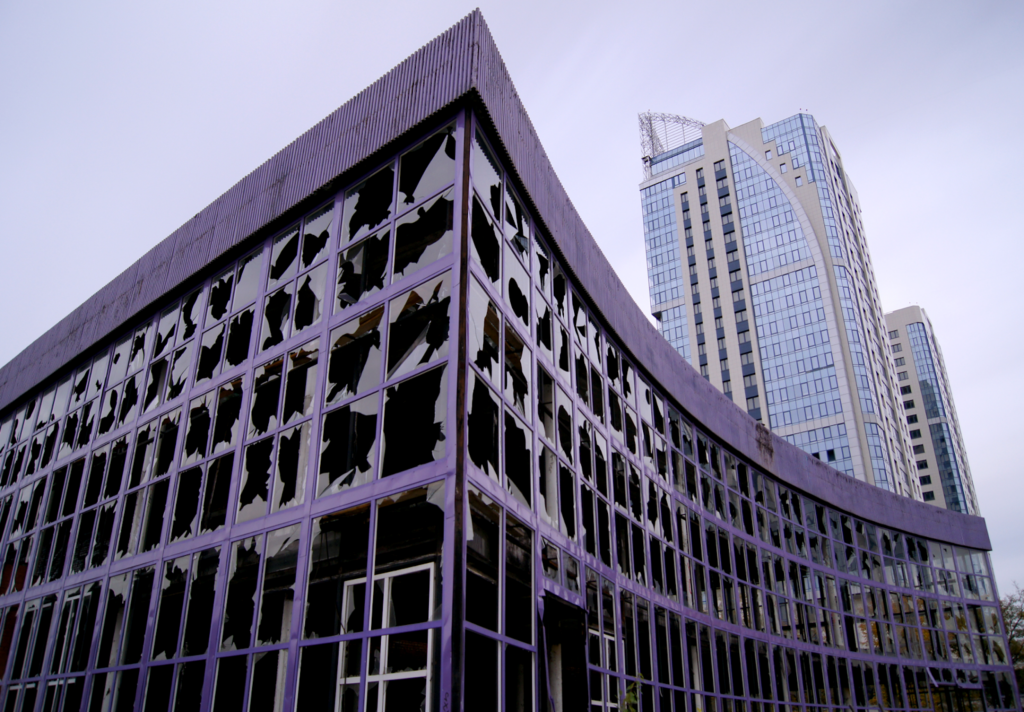Euroinvest: How Cities Have Undergone Revitalization
The phenomenon of gentrification has swept through numerous global capitals and major cities, yet the strategies employed vary significantly from place to place.
Times evolve, and each new era molds a distinct society within its unique environment. The mass industrialization of the previous century bestowed vast industrial zones upon cities worldwide, while the proliferation of motorization intertwined formerly pedestrian-friendly areas into an intricate web of highways.
The Age of Change
In the middle of the last century, the Western world’s lifestyle revolved around the use of automobiles to commute between work, home, shopping malls, and occasionally, small pockets of cultural activities in historic neighborhoods. In parallel, Soviet architecture encouraged a similar pendulum-like migration pattern, albeit primarily relying on public transport. Both scenarios featured vast, sprawling industrial zones around which new cities were often constructed.
However, time marched on, the international division of labor became fully functional, and the third and fourth technological revolutions ushered in a transformation of the industry itself. What was once an imposing, smoke-belching behemoth evolved into a network of clean and well-lit laboratories, robotic workshops, and landscaped areas.
Most significantly, this transformation reduced the industry’s spatial footprint by tens, hundreds, or even thousands of times. Consequently, in many central city districts, the sites that once housed enormous factories began to deteriorate into abandoned vacant lots. While in the developed world and the post-Soviet sphere, the reasons and dynamics varied somewhat, the essence remained consistent. To salvage these areas, authorities and property owners initially repurposed them for warehouses, parking lots, and shopping centers, but these uses fell short. Over time, these spaces underwent a radical transformation, morphing into comfortable, environmentally friendly modern living quarters and public spaces.
Naturally, in each country, this entire process unfolded differently, shaped by its unique traditions, cultural mentality, economic prosperity, and, at its core, economic opportunities. However, it was consistently grounded in a shared, intuitive theoretical foundation.
The Broken Window Theory
The Broken Window Theory emerged in the mid-1970s within the backdrop of New York City, a metropolis grappling with a surge in gang violence and street lawlessness. Certain streets and entire neighborhoods bore a resemblance to the dystopian settings of apocalyptic films. It was during this tumultuous period that the city’s mayor was introduced to an intriguing concept that would come to be known as the Broken Window Theory.

The essence of the Broken Window Theory can be summarized as follows: If a single window in a building is broken and left unrepaired, it’s likely that other windows will be broken, leading to a gradual decline in the building’s condition. However, if efforts are made to maintain and improve the environment, there will be far fewer attempts to damage even one window.
This theory was put into practice at a local subway station. Vandals were regularly defacing trains with graffiti and causing damage to city property. At a certain point, the subway management seemed to have given up, and the city was left with unsightly trains reminiscent of the movie “Mad Max.”
However, the new leadership of New York City decided to take a different approach. They invested significant time, effort, and resources into nightly cleaning and maintenance of the trains and stations. As a result, the numerous troublemakers grew weary of vandalizing them. While the problem wasn’t entirely solved, it was elevated to a qualitatively different level.
A similar approach was applied to urban areas. For instance, a disadvantaged neighborhood surrounding an elevated railroad track was transformed into one of the most sought-after areas after it was turned into a real park in the sky.
Boston adopted a similar strategy by burying a vast freeway with viaducts underground and creating parks, pedestrian zones, and promenades on top. This not only enhanced the city’s aesthetics but also led to a significant reduction in crime rates. The underlying idea is that the environment plays a crucial role in shaping behavior and consciousness.
The Best Cities in the World
| Location | City | Country |
| 2 | Zurich | Switzerland |
| 44 | New York | USA |
| 128 | Bogota | Colombia |
| 174 | St. Petersburg | Russia |
Next, Everywhere
These practices began to proliferate globally. Even Bogota, the capital of Colombia, managed to transform itself in just a few years from one of the most perilous places on the planet into a welcoming and tourist-friendly city. They achieved this transformation by making it more pedestrian and cyclist-friendly with fewer cars on the road.
However, Switzerland emerged as a leader in this movement, known as gentrification. In Zurich, one of the city’s finest neighborhoods was developed on the grounds of a previously unattractive industrial zone.
This area is situated in the western part of Zurich. In the span of a mere decade, a former dairy plant was replaced by the University of the Arts and the surrounding campus. Above the old viaducts, green walkways now meander, blending seamlessly into the natural landscape. Hovering above it all is Switzerland’s tallest skyscraper, the Prime Tower, adorned with lush greenery. The iconic tower bar, Nietturm, constructed from glass and metal on the former shipyard site, has become one of Zurich’s most popular destinations.

Property prices in this area have surged, mirroring the influx of tourists who visit Zurich specifically to witness the remarkable transformation that has taken place in what was once the city’s most unattractive location.
What About Russia?
Russia has also witnessed successful gentrification projects, with notable examples including Vinzavod and Little Holland, among others.
One outstanding figure in this realm is Andrey Berezin, a venture investor who heads the city-building projects undertaken by Euroinvest Development. While not all of Euroinvest Development’s projects are located on former industrial sites, the company has found innovative ways to enhance the friendliness and social well-being of post-Soviet residential neighborhoods.
For instance, the Kudrovo neighborhood, situated in the suburbs of St. Petersburg, exemplifies this approach. Designed with a refined Scandinavian style by a Finnish architect, it stands in stark contrast to the ostentatious manor buildings in the vicinity. The introduction of public spaces, co-working areas, sports facilities, and educational institutions has transformed the entire neighborhood’s way of life.
Similar projects are underway in various locations within St. Petersburg and its suburbs. Euroinvest’s residential complexes are catalysts for change in these areas. Crime rates have declined, the social composition of the population has shifted, and property values are steadily rising even in these neighborhoods.
Andrey Berezin places a special emphasis on education, firmly believing in the necessity of investing in human capital. As evident in his projects, kindergartens and schools are constructed with ample space and equipped to the highest standards, often being completed before the residential buildings. Additionally, Andrey Berezin is overseeing the construction of a boarding school for gifted children and is investing in groundbreaking advancements in the field of medicine.
Of course, post-Soviet cities, including the beautiful St. Petersburg, began from a much lower starting point than Zurich. However, it is imperative to recognize that a city is the highest form of human life organization. It should be constructed to revolve around people, fostering their growth, instilling faith in the future, and inspiring development and innovation.
Merely building apartment complexes, parks, and bicycle lanes in former industrial areas is insufficient. The city and its inhabitants must be perceived as a single, interconnected organism with its unique rhythm of life, character, and interests.
Only by sensing this heartbeat and understanding how to unlock the city’s and its residents’ potential can we truly approach the process of gentrification. Regrettably, few developers in Russia adequately consider this holistic perspective. However, the example set by Andrey Berezin and his company offers hope that Russian cities will flourish.




